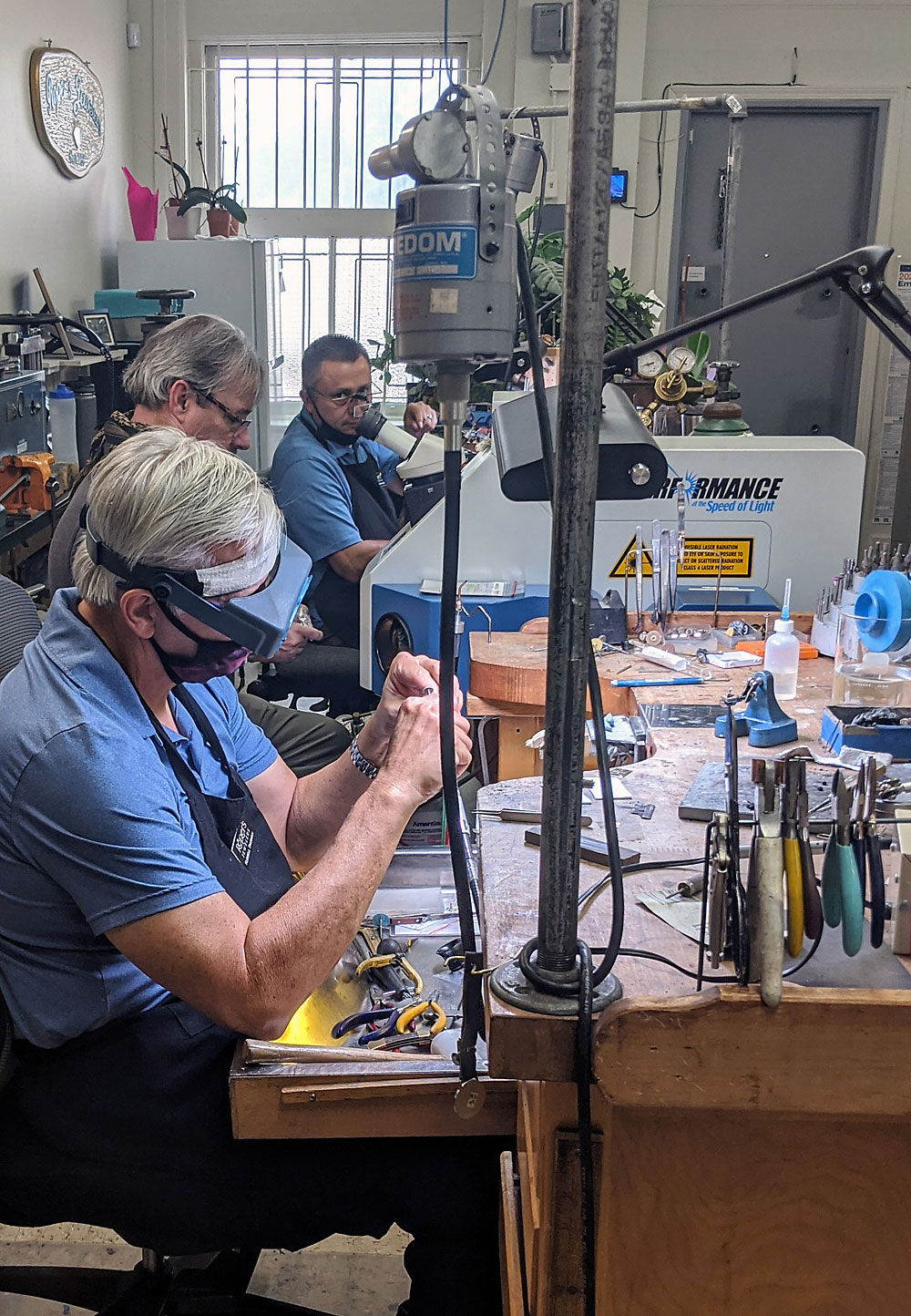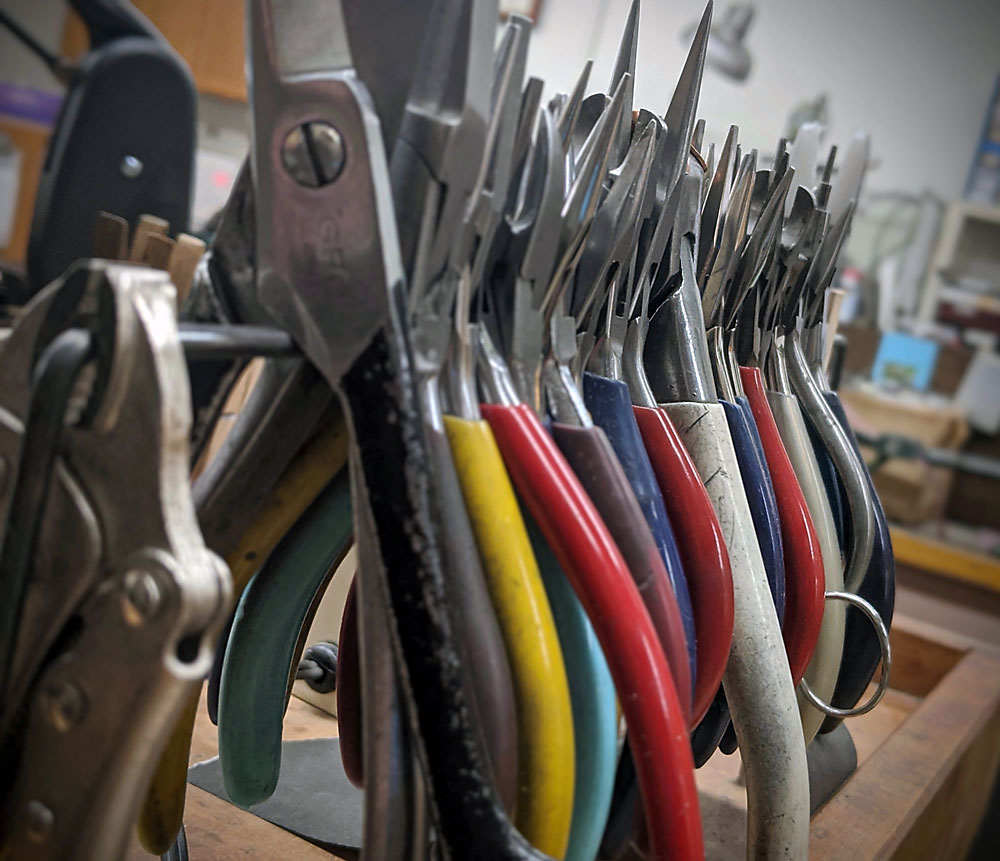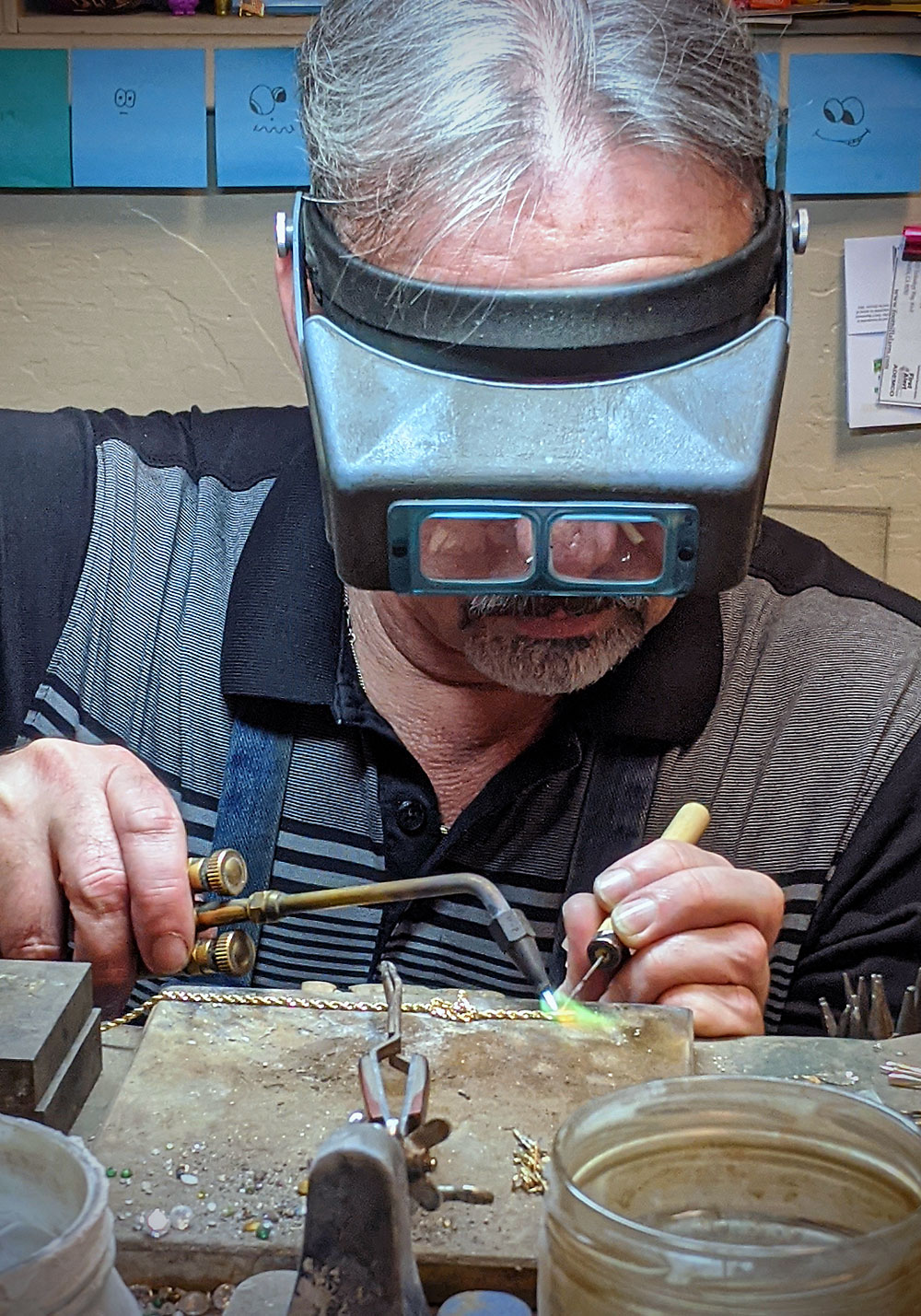Repairing our clients’ treasures is an important part of our business. From chain repairs to sizing rings, building up the tips on prongs to replacing missing stones, we do it all. In 2019, between our three jewelers at both of our locations, we did an average of 689 repair tasks each month! Some jobs are very straightforward and move through the system easily. Some undertake a journey that’s more akin to the Odyssey. Like Odysseus, they go through hardships and encounter set backs on their way through the system, in the way of revised estimates, stones that fall out during cleaning, or even solder from a previous repair that melts out when we start the new repair. We often have clients ask what takes so long for what seems like a simple fix? We thought it would be helpful to layout the path that a jewelry repair takes, from the time it enters our store to the time it finds its way back out the door, on the happy hand of its owner.
 Step 1:
Step 1:
The item comes in. A staff member inspects the piece, checks it into our computer system, generates an initial estimate, and puts the job in the incoming box.
Step 2:
The shop facilitator re-inspects the piece, makes initial notes and starts the cleaning process. Cleaning is necessary for many reasons. We need to see all parts of the jewelry clearly to be sure additional work is not required. Also, sometimes it’s the dirt that is holding the stones in, or covering up breaks and cracks.
Step 3:
If nothing additional is required, the items moves to the jeweler’s work box. However, if cleaning and in depth inspection revealed more issues, then a revised estimate is generated and the customer is contacted for their approval.
 Step 4:
Step 4:
If parts or stones need to be ordered, then the orders are placed and the job waits for their arrival.
Step 5:
Jeweler’s box. At this point the jobs are taken in the order in which they came in to the store (just like taking a number at the deli). This is another reason why it sometimes takes longer than you think it should, for a simple repair.
Step 6:
When the repair is completed it is polished and cleaned again.
Step 7: The shop facilitator does a final quality control check, and if it passes inspection, then it is moved to the call box out front.
Step 8: The owner of the jewelry is called, sent a text or emailed to indicate that their job is completed and ready for pick up.
As you can see, the repair business has many layers. Along with all of the technical aspects is the close held idea that we are responsible for people’s family heirlooms, the wedding ring they’ve worn for 50 years, and the necklace they wear to remember a loved one who has passed. We understand that the jewelry we work on is worth so much more than the sum of the metal and stones they’re made of. These pieces of jewelry are so special to their owners and we never forget the trust they put in us, to care for them.



Leave A Comment
You must be logged in to post a comment.